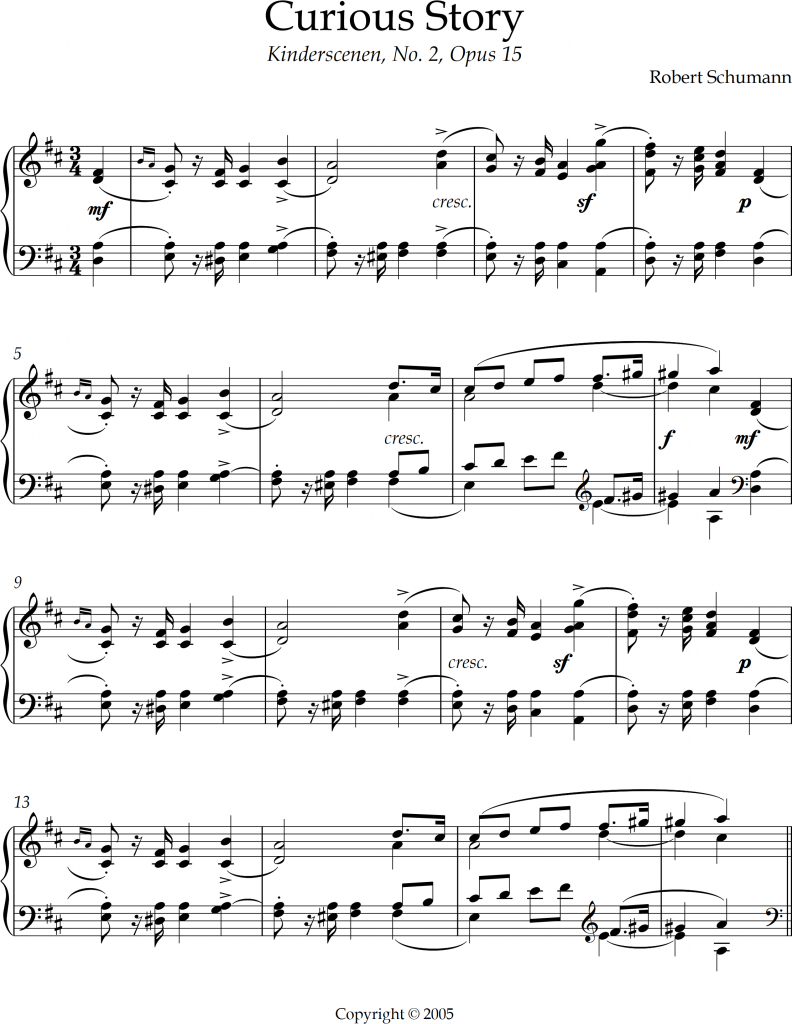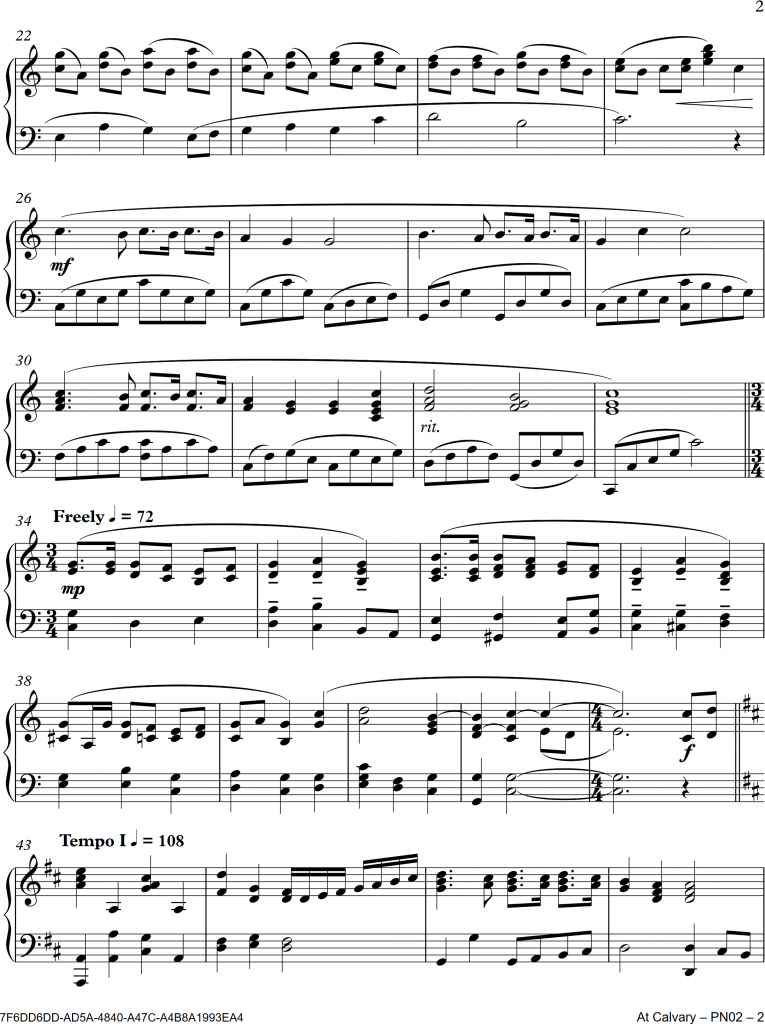Let’s talk about slurs, phrases and ties. As a long time piano teacher, I find many students, even advanced players get confused.
Slurs – curved line over/under two or more *different* notes.
Tie – curved line connecting the *same* note(s) immediately next to one another.
Phrase – a musical idea, often indicated with a slur line over/under many notes or more often, many measures.
Slurs mean to play the notes legato, or to put it into English – play the notes smoothly, connected or without any silence between the notes. How this is done depends on your instrument. On piano, do not lift the finger of the first note until you go to play the 2nd note. In bowed strings, like violin, it typically means to keep the bow going in the same direction. Wind/brass instruments it often means that you don’t tongue between notes. Check with your teacher on the best way to do a slur. You do have a teacher, right? Please tell me you aren’t trying to do this without anyone checking your work to see if it is correct – just because it sounds fine to you doesn’t mean it’s correct.

In the entire example above, all the curved lines over/above the notes are slurs, *except* for the D notes in the right hand and the E notes in the left hand in measures 7-8 & 15-16 (3rd beat tied to 1st beat). Those are ties. In all other cases, even measure 5 going into measure 6, the curve line is over/under at least 2 different notes. That’s all there is to slurs. Note that in this piano music example, there are some passages with both stem up and stem down notes at the same time. We call the different directions “voices.” In those cases, the position of the slur makes a difference. For example, the slur in measures 7 & 8 over the high (stems up) voices in the right hand part are under the influence of the slur, but not the low voices.
At the end of a slur it is common to “take a breath” before going to the next note. At measure 22 below in the right hand, a pianist might shorten the length of the off-beat 8th notes (& of 1, & of 2, etc) ever so slightly. A violinist would change bow directions resulting in a break in the sound. How much breath one takes, if any, is subjective.

In the above example starting at measure 26, the curved line over the right hand part is more properly called a phrase. A phrase being a musical idea implies that all the notes in the phrase are all part of one musical idea. Whether to play all the notes legato (smooth) as a slur would indicate is more of a performance choice than a requirement. In fact, in this example it is impossible to play the entire phrase connected. Can you spot why not? In measure 27 there are two repeated “G”‘s in the right hand. By definition, repeated notes cannot be played smoothly connected. One has to lift their fingers (or change bow direction, etc.) in order to play a repeated note. That causes a silence between the notes and thus they are no longer connected or smooth.
Ties. In measures 40 to 41 and 41 to 42 are examples of ties. The top note, B on the 3rd beat is tied into the 1st beat. That means play the note on beat 3 and hold the note down until the end of the tied note, in this case the end of beat 1. The F in measure 41, beat one is tied to beat 2. The C on beat 2 is tied into beat 3 *and* into the dotted half note on beat one of measure 42. All the while, there is a phrase/slur line over measures 39 to 42. Both notes in the left hand of measure 41, beat 2 tie into the next measure. In the case of the ties, all the curved lines connect the *same* note(s) to the same note with no other notes between them. Don’t be confused by the slur in measure 34 and 35. The first and last notes are both G in the right hand. Are the two G’s tied? Of course not. Because there are several notes between them it can only mean the curved line is a slur.
I hope this helps. Please comment below.
